= Gibbaeum schwantesii Tischer
Kakteen Sukk. 1937, 152
Accepted Scientific Name: Gibbaeum velutinum (L. Bolus) Schwantes
Z. Sukkulentenk. 3: 106 (1927).
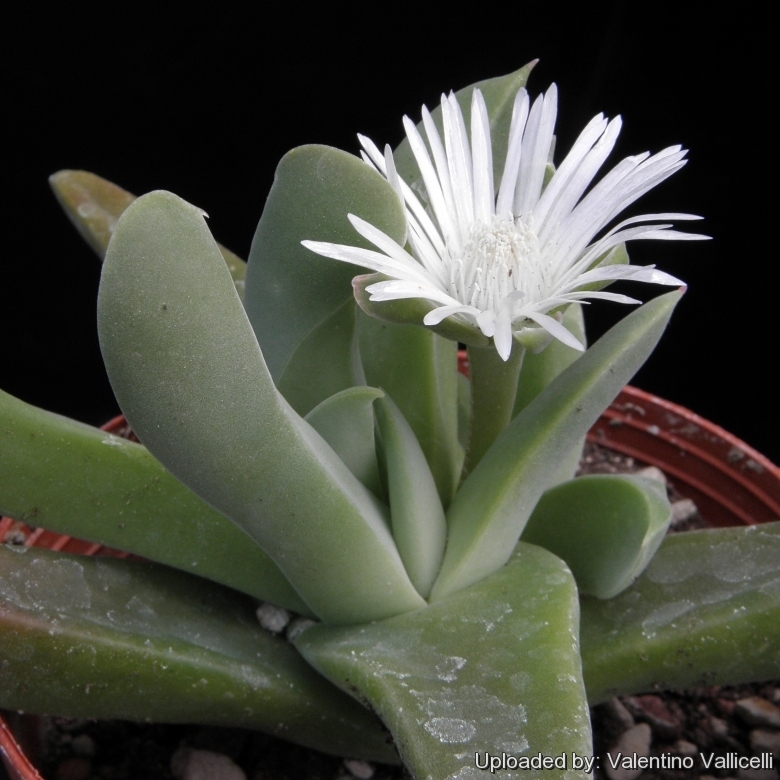
Gibbaeum muirii (Gibbaeum schwantesii) Photo by: Valentino Vallicelli
Origin and Habitat: Little Karoo at Lemoenshoek, Western Cape, South Africa
Habitat: Gibbaeum schwantesiiSN|14358]]SN|14356]] is known only from two localities on flat areas among loose, white quartzite pebbles on loamy renosterveld soils within the area of Gibbaeum velutinumSN|14356]]SN|14358]].
Synonyms:
See all synonyms of Gibbaeum velutinum
back
Accepted name in llifle Database:Gibbaeum velutinum (L. Bolus) SchwantesZ. Sukkulentenk. 3: 106 (1927).Synonymy: 6
back
Common Names include:
AFRIKAANS (Afrikaans): Haaibekkie
Description: Gibbaeum schwantesiiSN|14356]]SN|14356]] is a white flowering form of the very variable Gibbaeum velutinumSN|14358]]SN|14358]]. It is distingushed for its slender narrowly triangular, laterally compressed leaves, that are longer more strongly incurved than the shorter, about 6 to 10 cm long and less silvery/grey. It has unequal leaf pairs, with the longer leaf being twice the length as the shorter. The longer leaf of each pair, with almost axe-like, hooked upper end. The flowers are larger (up to 50 mm in diameter) mostly white, but occasionally with a pale pink flush and the flower stalks 3-5 cm long. Like the type species it is very variable. Gibbaeum schwantesiiSN|14356]]SN|14356]] often has a reddish tinge.
Habit: It is a perennial clumping, mat forming succulents. Up to 5 cm tall and 10 (or more) cm wide. The plant is compact with only the upper surface of leaves visible. Although this slow growing species has very small heads, it spreads into grey-green carpets.
Stem: Stems short, woody.
Leaves: Fleshy, narrowly triangular, laterally compressed, about 6-10 cm long, dark green, green, yellow-green, brownish leaves or silvery/grey. The leaves forms unequal pairs, in which the longer leaf is mostly hook-shaped while the short one addpressed to it with a neat cut margin visible close to the the longer leaf. The epidermis is covered by characteristic minuscule branching hairs that give it a silver/velvety appearance. Every year a few new leaves grow from the central stem.
Flowers: Daisy-like, mostly white or cream-coloured, sometime with a pale a pale pink/violet flush, up to 30-50 mm in diameter and long lasting. Pedicel 30-50 mm long. Petals white or white apically suffused in pink, filamentous staminodes white, basally faintly pink, filaments white.
Blooming season: Late winter to spring.
Fruit: Capsules six-chambered.
Subspecies, varieties, forms and cultivars of plants belonging to the Gibbaeum velutinum group
 Gibbaeum schwantesii Tischer: has broadly triangular, horizontally compressed Leaves, 3?7 cm, leaf tips with chin or hook, flowers pink to pale magenta, 20-35 mm diam. Distribution: Springfontein to Soutkloof and Muiskraal and Sandkraal.
Gibbaeum schwantesii Tischer: has broadly triangular, horizontally compressed Leaves, 3?7 cm, leaf tips with chin or hook, flowers pink to pale magenta, 20-35 mm diam. Distribution: Springfontein to Soutkloof and Muiskraal and Sandkraal. Gibbaeum velutinum (L. Bolus) Schwantes: has narrowly triangular, laterally compressed leaves, about 6-10 cm long, with almost axe-like, hooked upper end; flowers white, 30?50 mm diam. Distribution: Northern slopes of the Langeberg, Western Cape.
Gibbaeum velutinum (L. Bolus) Schwantes: has narrowly triangular, laterally compressed leaves, about 6-10 cm long, with almost axe-like, hooked upper end; flowers white, 30?50 mm diam. Distribution: Northern slopes of the Langeberg, Western Cape.
Notes: Various species of the genus Gibbaeum are called in Afrikaans, ‘Haaibekkie’. In English this means ‘beak of a shark’. This very apt name is derived from the shape of the two leaves that together form the plant growth. They differ in size and because these leaves grow closely together the fissure of most species looks exactly like the beak of a shark, though without the teeth of course.
Bibliography: Major references and further lectures
1) Heidrun E. K. Hartmann “Illustrated Handbook of Succulent Plants: Aizoaceae F-Z” Springer, 2002
2) Gert C. Nel “The Gibbaeum Handbook, a Genus of Highly Succulent Plants, Native to South Africa” Blandford Press, 1953
3) Hermann Jacobsen “A handbook of succulent plants: descriptions, synonyms, and cultural details for succulents other than Cactaceae, Volume 1” Blandford Press, 1960
4)Werner Rauh “The Wonderful World of Succulents: Cultivation and Description of Selected Succulent Plants Other Than Cacti” Smithsonian Institution Press, 1984
5) Goldblatt, P. and Manning, J.C. 2000. "Cape Plants: A conspectus of the Cape Flora of South Africa." Strelitzia 9. National Botanical Institute, Cape Town.
6) Hilton-Taylor, C. 1996. "Red data list of southern African plants." Strelitzia 4. South African National Botanical Institute, Pretoria.
7) Vlok, J. and Schutte-Vlok, A.L. 2010. "Plants of the Klein Karoo." Umdaus Press, Hatfield.
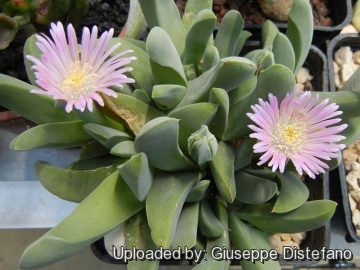 Gibbaeum muirii (Gibbaeum schwantesii) Photo by: Giuseppe Distefano
Gibbaeum muirii (Gibbaeum schwantesii) Photo by: Giuseppe Distefano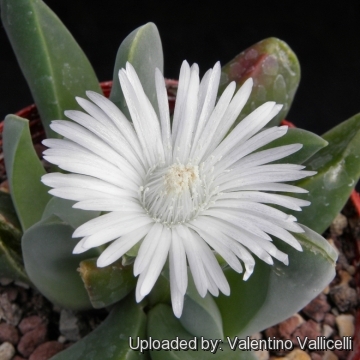 Gibbaeum muirii (Gibbaeum schwantesii) Photo by: Valentino Vallicelli
Gibbaeum muirii (Gibbaeum schwantesii) Photo by: Valentino Vallicelli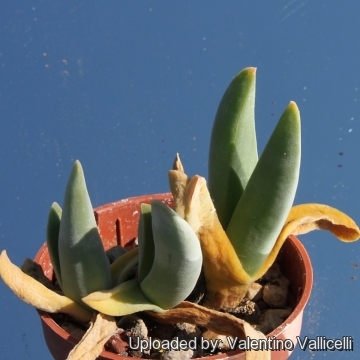 Gibbaeum muirii (Gibbaeum schwantesii) Photo by: Valentino Vallicelli
Gibbaeum muirii (Gibbaeum schwantesii) Photo by: Valentino Vallicelli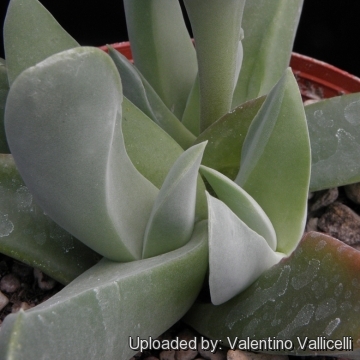 Gibbaeum muirii (Gibbaeum schwantesii) Photo by: Valentino Vallicelli
Gibbaeum muirii (Gibbaeum schwantesii) Photo by: Valentino Vallicelli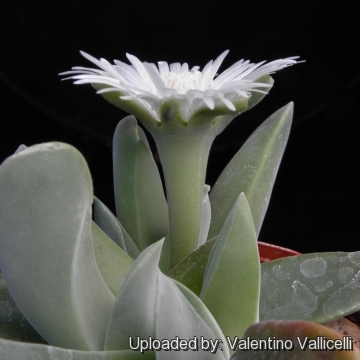 Gibbaeum muirii (Gibbaeum schwantesii) Photo by: Valentino Vallicelli
Gibbaeum muirii (Gibbaeum schwantesii) Photo by: Valentino Vallicelli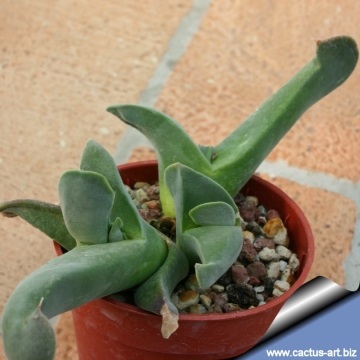 Gibbaeum muirii (Gibbaeum schwantesii) Photo by: Cactus Art
Gibbaeum muirii (Gibbaeum schwantesii) Photo by: Cactus Art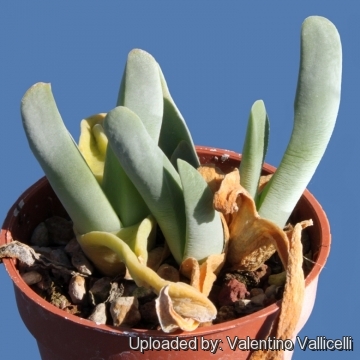 Gibbaeum muirii (Gibbaeum schwantesii) Photo by: Valentino Vallicelli
Gibbaeum muirii (Gibbaeum schwantesii) Photo by: Valentino Vallicelli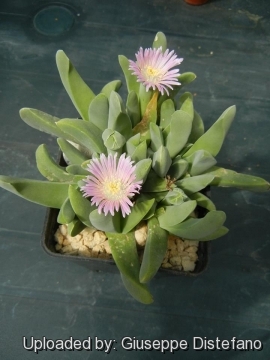 Gibbaeum muirii (Gibbaeum schwantesii) Photo by: Giuseppe Distefano
Gibbaeum muirii (Gibbaeum schwantesii) Photo by: Giuseppe DistefanoCultivation and Propagation: It is a "winter" grower which is most active from late winter until later spring and heading for summer dormancy, and notoriously difficult to grow because it rot very easily, but Gibbaeum schwantesiiSN|14356]]SN|14356]] is not so difficult in cultivation, keeps going over the summer too and don’t’ need very special care.
Soil: It grows best in sandy-gritty soil and requires good drainage as it is prone to root rot. It can grows outdoor in sunny, dry, rock crevices (protection against winter wet is required) It can also be cultivated in alpine house, in poor, drained soil.
Fertilization: Feed it once during the growing season with a fertilizer specifically formulated for cactus succulents (poor in nitrogen), including all micro nutrients and trace elements diluted to ½ the strength recommended on the label. It thrives in poor soils and need a limited supplies of fertilizer to avoid the plants developing excess vegetation, which is easily attacked by fungal diseases.
Watering: The Gibbaeums thrive in dry and desert regions and are able to stand extended periods of drought and require careful watering. Water minimally in summer, only when the plant starts shrivelling, water more abundantly when they are growing in the autumn and spring, but let the soil dry between soaking. Requires little water otherwise its epidermis breaks (resulting in unsightly scars). If grown in a container, bottom watering by immersing the container is recommended. It must have very dry atmosphere.
Light: It needs a bright sunny or light shade exposure in winter, but keep cool and shaded in summer.
Hardiness: It prefer a very bright situation and require a minimum temperature 5°C (But will take a light frost and is hardy down to -7° C for short periods if it is in dry soil). USDA zones 9A-11.
Uses: Container, rock garden.
Pests and diseases: It is vulnerable to mealybugs and rarely scale.
Propagation: Seed in autumn or (or rarely) cuttings. Take the cutting from a grown-up mother plant. Each cutting must contain one or more heads along with a fraction of root and permit to dry out a couple of days, lay it on the soil and insert the stem end partially into the soil. Try to keep the cutting somewhat upright so that the roots are able to grow downward. It is relatively difficult to root Gibbaeums from cuttings and generally pointless as well, so quick are they from seed.


















